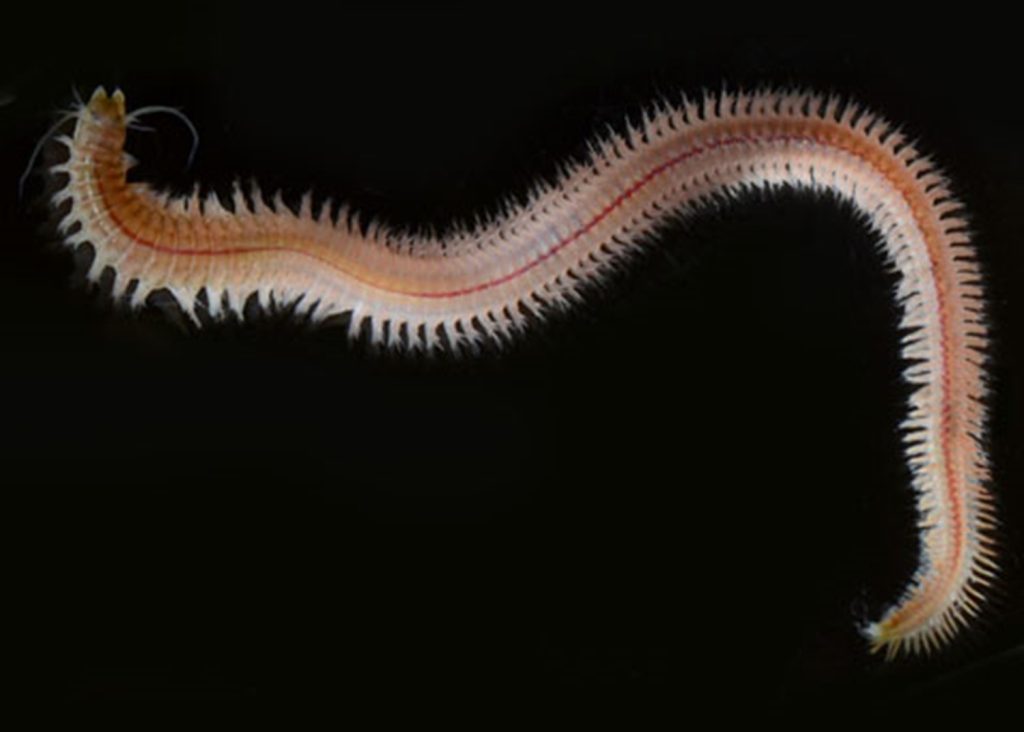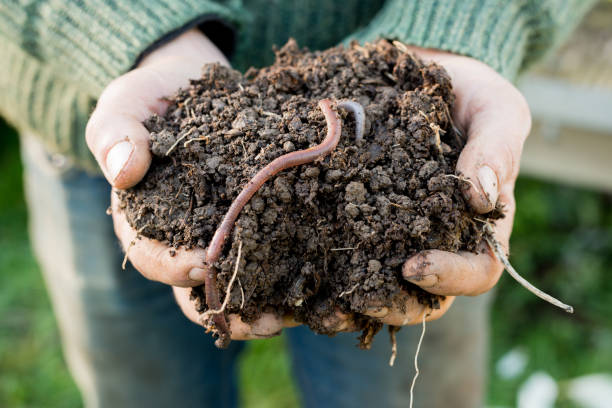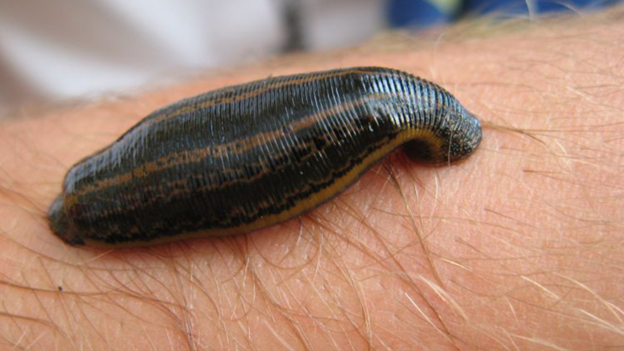Introduction to Phylum Annelida:
The term ‘Annelida’ was first coined by Lamarck whereby ‘annulus’ means little rings. They have vermiform, worm-like body.
General Characters:
Habit and habitat
- Some annelids are terrestrial while majority of them are aquatic.
- They have burrowing or tubicolous (living in tube-like construction made by them) habit. Most of them are free-living while some can be commensal and parasitic.
Body symmetry
Annelids have bilaterally symmetrical body.
Segmentation
- They are distinguished from roundworms (Nematodes) and flatworms (Platyhelminthes) by their metamerically segmented bodies. The terms ‘septa’ and ‘annuli’ refer to internal and exterior segmentation, respectively.
Level of body organization
They have organ-system level of body organization.
Germ layers
They are triploblastic, consisting of an outer ectoderm, middle mesoderm, and inner endoderm.
Body plan
They have complete alimentary canal, starting from mouth and terminating in anus.
Coelom
- They have true coelom i.e., schizocoelom (except in leeches).
- They are the first animals to have a closed vascular system and first phylum where blood vessels appeared.
- There may have locomotive organs, which are segmentally repeating chitinous bristles known as setae. Setae are embedded in skin. Some may have parapodia that bear setae.
- Digestion is completely extracellular.
- Respiratory pigments are either hemoglobin or erythrocruorin dissolved in blood plasma. There is absence of RBC, WBC and platelets. Respiration may occur either through gills located on the head, parapodia, or directly across the moist body surface.
- Their nervous system consists of a pair of cerebral ganglia forming the brain, and a double ventral nerve cord equipped with segmental ganglia and lateral branches.
- Excretion takes place via coiled tubular structures known as nephridia.
- Specialized sensory structures include taste receptors, touch-sensitive organs, balance-sensing statocysts, and light-detecting photoreceptor cells.
- Members of this group may be hermaphroditic or possess separate sexes. When larvae are present, they are of the trochophore type.
Classification of Annelida:
The primary criterion for classification is whether locomotory appendages such as parapodia and setae are present or absent.
Class Polychaeta (Greek: poly = many, chaite = bristle)
- These are commonly called as bristle worms.
- They are chiefly marine, some in fresh water.
- Segmentation is both internal and external.
- Head is distinct with eyes, palps and tentacles.
- Every segment has two parapodia, which are paddle-like projections that contain several long setae in bundles. Parapodia is basically biramous.
- Clitellum is absent.
- Sexes are separate.
- Some species lack gonads or only have them temporarily.
- Most of the segments bear gonads in many species of this class.
- Fertilization is external and development can be direct or indirect. Indirect development includes trochophore larva.
Examples:
Aphrodite (Sea mouse)
Nereis (Ragworms)
Chaetopterus (Paddle worms)
Arenicola (Lugworms)

Fig: Nereis
Class – Oligochaeta (Gr., oligos- few + chaite- hair)
- They are mostly terrestrial, though several have freshwater and marine varieties.
- Segmentation is both internal and external.
- Head is distinct, without sensory organs.
- The animals in this class do not have appendages.
- Setae are few, embedded in skin.
- Parapodia is absent.
- Clitellum develops at sexual maturity. Clitellum helps in cocoon formation.
- They are hermaphrodite.
- Development is direct (no larval stages); fertilization is external (in a cocoon).
Examples:
Earthworm(Pheretima, Lumbricus, Tubifex)

Fig: Earthworm
Class – Hirudinea (L., hirudo- leech)
- They can be present in freshwater, marine water or land
- They are generally ectoparasitc, blood-sucking.
- Body has fixed number of segments (33).
- Segmentation is external without internal septa.
- Appendages, parapodia and setae are absent.
- They have anterior and posterior suckers. These suckers aid in attachment and feeding.
- Because botryoidal tissue fills the coelom, it is significantly diminished and creates hemocoelomic sinuses.
- They are hermaphrode.
- Fertilization is internal.
- Development of embryo occurs in cocoons, direct without larval stages
Examples:
Hirudo (medicinal leech)
Hirudinaria (cattle leech)
Class – Archiannelida (Gr., arch- First)
- They are marine worms
- No locomotory organs i.e parapodia and setae.
- Sexes are usually separate.
- Development can be direct or indirect. Indirect development involves trochophore larva.
Example:
Polygordius (Knot worm)

Fig: Leech
Vermicomposting and Vermiculture:
Vermicomposting
It is an eco-friendly method of recycling organic waste with the help of earthworms. In this process, biodegradable materials such as food scraps, crop residues, or animal dung are broken down by earthworms and converted into nutrient-rich compost. Vermiculture, sometimes known as “worm farming,” is the cultivation and care of worms especially for this purpose.
Earthworms are often called natural soil engineers. When they consume organic matter, it passes through their digestive tract where it is partially broken down. The material released as worm castings, or vermicasts, is highly enriched with nutrients like nitrogen, phosphorus, potassium, calcium, and magnesium. These casts not only supply plants with readily available nutrients but also improve the structure of soil, increase aeration, and enhance its capacity to hold water.
Methods of Vermicomposting:
There are two main ways to practice vermicomposting:
Bed Method
- Organic waste is arranged in shallow layers on the ground or in containers.
- The worms are introduced, and the waste is regularly moistened to keep conditions favorable.
- This method is widely used because it is simple, cost-effective, and ensures proper aeration.
Pit Method
- Waste is collected inside cemented or earthen pits.
- While it contains the waste neatly, it often leads to poor aeration and waterlogging.
- For this reason, it is less commonly recommended compared to the bed method.
Earthworms used in Vermiculture:
Not all earthworms are equally suited for composting. Lumbricus rubellus (redworms) and Eisenia fetida (red wigglers) are the two most successful species. These are surface-dwelling worms that break down materials effectively, proliferate rapidly, and flourish in organic waste.
Their activity breaks down complex organic material, boosts microbial action, and speeds up composting.
Importance in Agriculture and Ecology:
The end product of vermicomposting is a fine, nutrient-rich compost that also contains humic substances and plant growth-promoting compounds. This natural fertilizer improves soil fertility, encourages healthy crop growth, and reduces the need for chemical fertilizers. By turning organic waste into a valuable resource, vermicomposting supports sustainable farming practices, enhances soil biodiversity, and helps in reducing environmental pollution.
